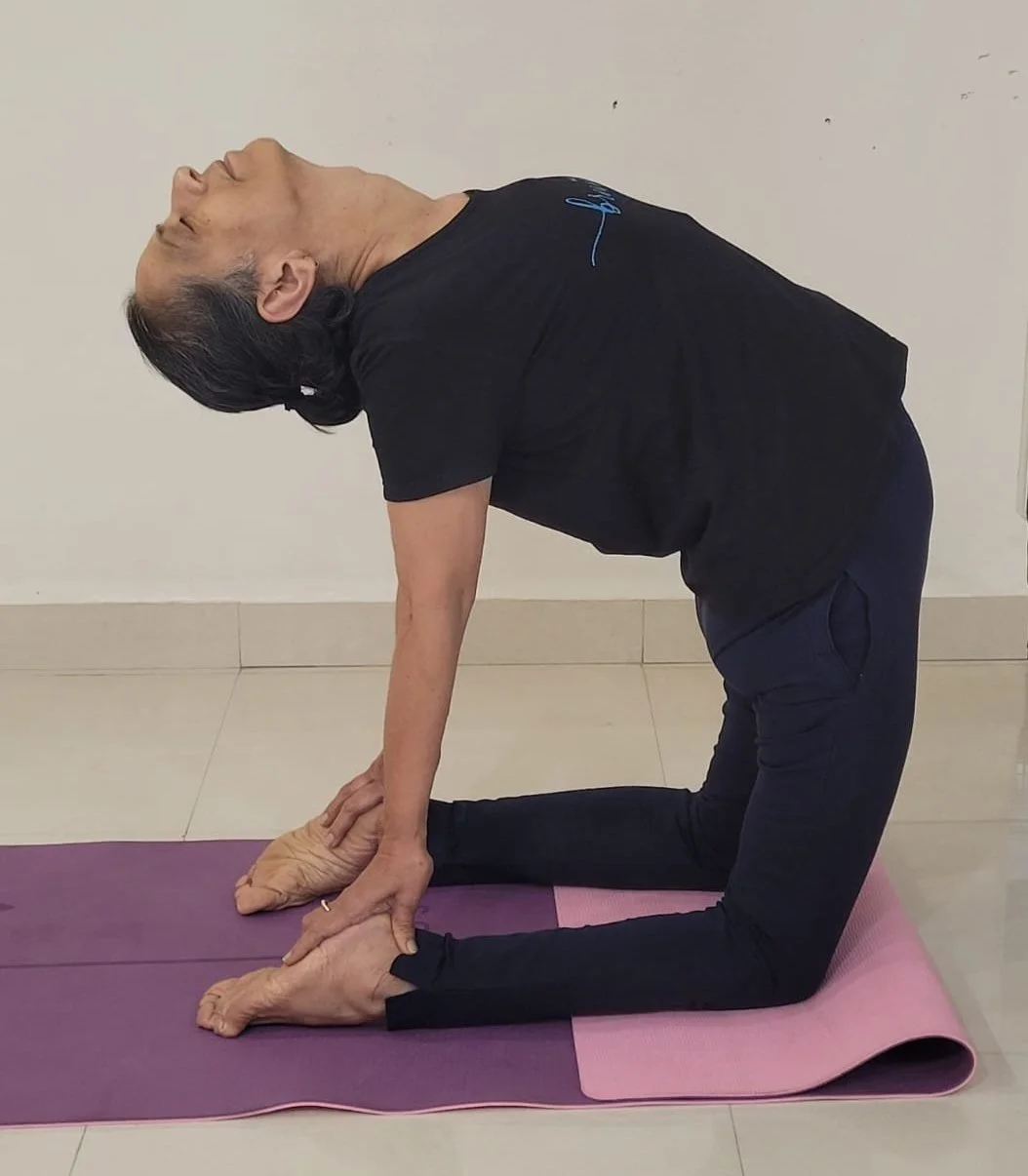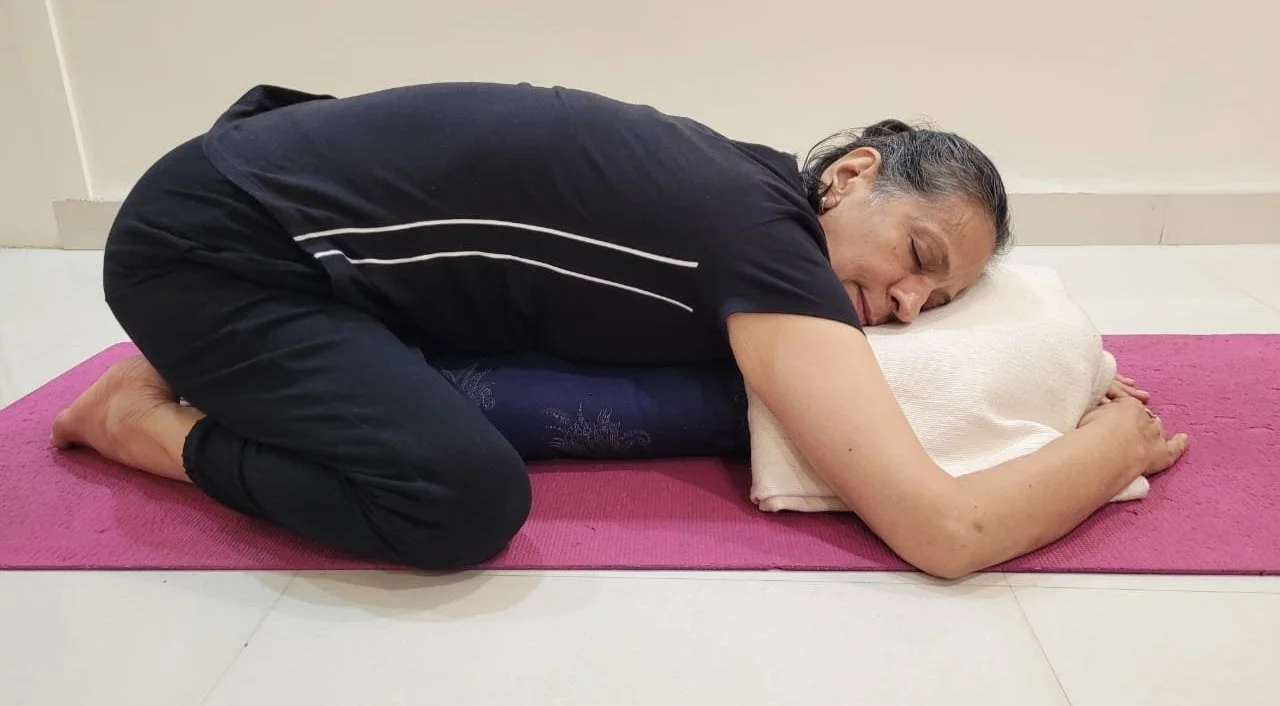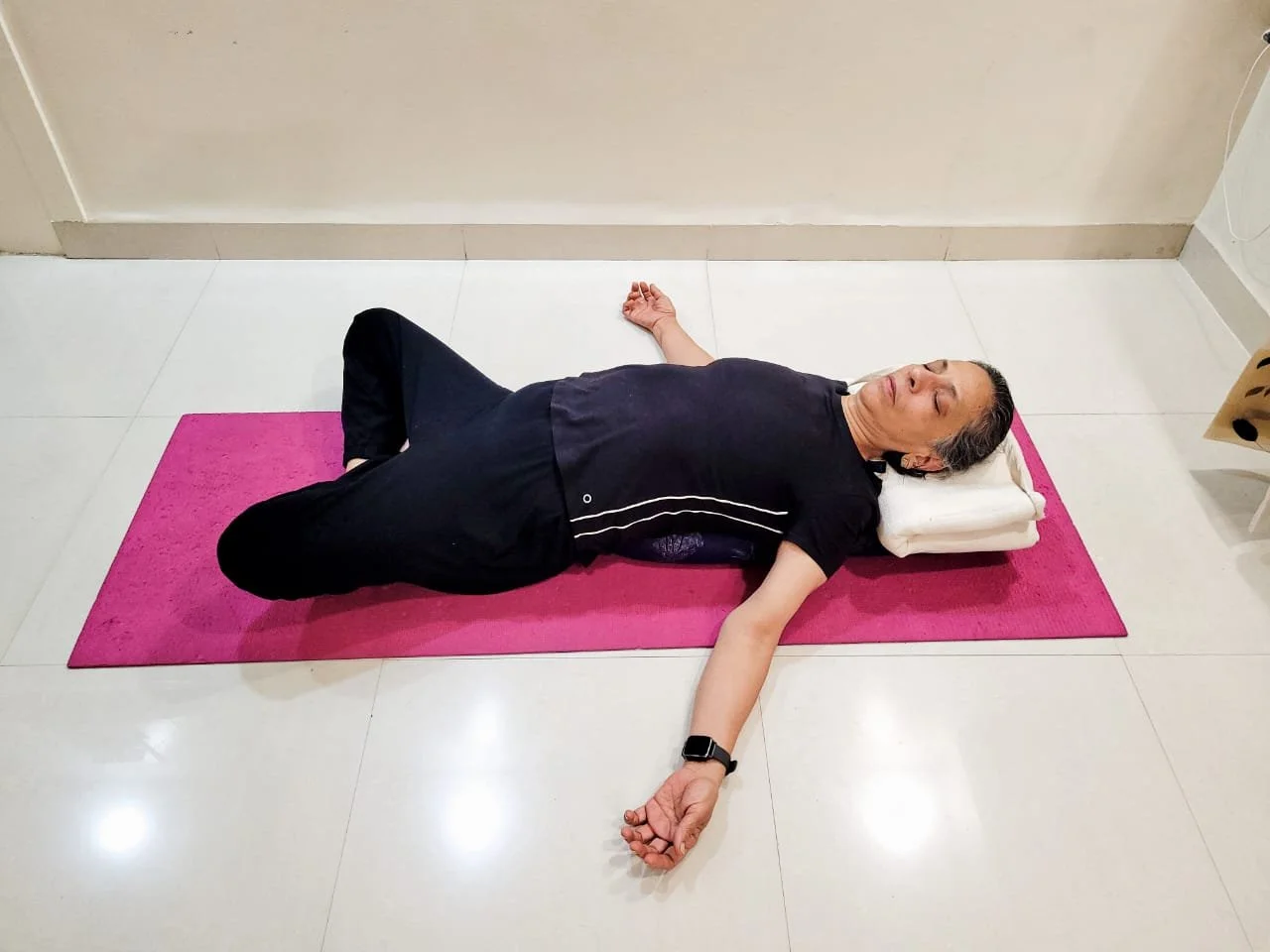Dhanurasana, also known as Bow Pose, has numerous benefits for the body and mind. Some of the key benefits of Dhanurasana include:
Strengthens the Back: Dhanurasana is an excellent pose for strengthening the muscles of the back, including the erector spinae, which help to maintain proper posture and prevent back pain.
Stretches the Chest and Shoulders: As you arch your back and lift your chest in Dhanurasana, you'll feel a deep stretch in your chest and shoulders. This helps to counteract the forward-slouching posture that is common in our modern lives.
Stimulates the Digestive System: Dhanurasana stimulates the digestive organs, including the liver, pancreas, and intestines, which can improve digestion and relieve constipation.
Relieves Stress and Fatigue: Dhanurasana is a great stress-reliever, as it helps to calm the mind and reduce tension in the body. It can also help to combat fatigue and boost energy levels.
Improves Respiratory Function: Dhanurasana opens up the chest and lungs, which can improve respiratory function and increase oxygen intake.
Tones the Abdomen: Dhanurasana engages the abdominal muscles, which can help to tone and strengthen the core.
Increases Flexibility: Dhanurasana is a deep backbend that requires flexibility in the spine, hips, and shoulders. Regular practice of this pose can improve overall flexibility and range of motion.
Overall, Dhanurasana is a powerful posture that can have a profound impact on the health and well-being of the body, mind, and spirit. It is counterindicated during periods, pregnancy, any sort of hernia and other abdominal issues.
As with any yoga practice, it's important to listen to your body and practice safely and mindfully








